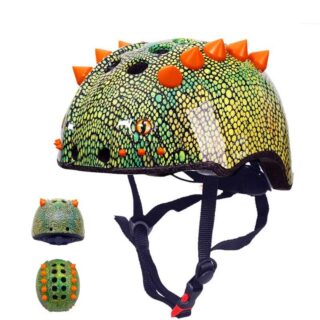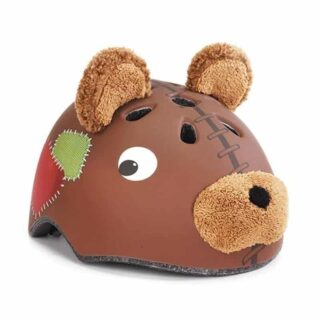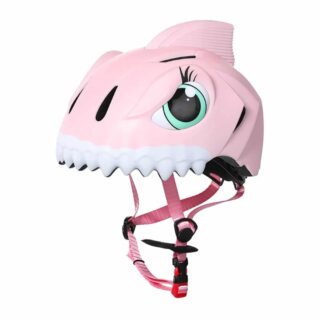-
Children's accessories, Children's helmet
120,90 $ Select options This product has multiple variants. The options may be chosen on the product page -
Children's accessories, Children's helmet
49,40 $ Select options This product has multiple variants. The options may be chosen on the product page -
Children's accessories, Children's helmet, Private sales
Original price was: 49,40 $.42,80 $Current price is: 42,80 $. Select options This product has multiple variants. The options may be chosen on the product page -
Children's accessories, Children's helmet
85,70 $ Select options This product has multiple variants. The options may be chosen on the product page -
Children's accessories, Children's helmet
16,40 $ Select options This product has multiple variants. The options may be chosen on the product page -
Children's accessories, Children's helmet, Private sales
76,90 $ Select options This product has multiple variants. The options may be chosen on the product page -
Children's accessories, Children's helmet, Private sales
65,90 $ Select options This product has multiple variants. The options may be chosen on the product page -
Children's accessories, Children's helmet
145,10 $ Select options This product has multiple variants. The options may be chosen on the product page -
Children's accessories, Children's helmet
Price range: 49,40 $ through 54,90 $ Select options This product has multiple variants. The options may be chosen on the product page -
Children's accessories, Children's helmet, Private sales
65,90 $ Select options This product has multiple variants. The options may be chosen on the product page -
Children's accessories, Children's helmet
49,40 $ Select options This product has multiple variants. The options may be chosen on the product page -
Children's accessories, Children's helmet
49,40 $ Select options This product has multiple variants. The options may be chosen on the product page -
Children's accessories, Children's helmet
Price range: 49,40 $ through 54,90 $ Select options This product has multiple variants. The options may be chosen on the product page -
Children's accessories, Children's helmet
Price range: 27,40 $ through 32,90 $ Select options This product has multiple variants. The options may be chosen on the product page -
Children's accessories, Children's helmet
Price range: 50,50 $ through 54,90 $ Select options This product has multiple variants. The options may be chosen on the product page -
Children's accessories, Children's helmet
71,40 $ Select options This product has multiple variants. The options may be chosen on the product page
Children’s helmets: why are they important?
The child’s helmet is an essential product for your child’s safety when engaging in two-wheeled activities such as motorcycling or cycling. Indeed, the head is a particularly fragile and shock-sensitive part of the body.
So it’s important to protect it effectively. A full-face helmet, such as the cartoon-style full-face motorcycle helmet for children, is the most recommended model, offering optimum protection by covering the whole head. It should be chosen with care according to the child’s morphology and age. Children’s helmets can save lives in the event of an accident. It is therefore essential not to neglect its quality, and to choose an approved model that meets current safety standards.
Whether for a boy or a girl, a child’s helmet should be seen as an investment in your child’s safety. It will enable your child to enjoy his or her favorite activities in complete peace of mind, and give you the peace of mind you need to make the most of those family moments.
Your child is growing up and taking an interest in rollerblading and cycling. Wearing a helmet is becoming increasingly important. Choosing the right equipment doesn’t just happen. Here’s everything you need to know about buying, using and maintaining a helmet.
That’s why helmets are mandatory. The accessory is imperative for children who practice :
-
- cycling;
- inline skating ;
- the skateboard ;
- Scooters
- Skiing
With this equipment, your child is safe from injury.
What’s the best shape and material for a child’s helmet?
Choosing a children’s helmet is crucial to their safety when engaging in activities such as scootering, cycling, mountain biking, quad biking or even motocross. It’s important to choose the best shape and material to guarantee optimum protection.
As far as shape is concerned, we recommend choosing a helmet with a smooth, round shape, as this ensures even distribution of force in the event of impact. Helmets with pointed or angular shapes can cause more serious injuries in the event of impact. In terms of material, children’s helmets are generally made from polycarbonate, fiberglass or carbon. Polycarbonate is the most commonly used material, as it is lightweight and offers good impact protection.
Fiberglass and carbon helmets are stronger, but also more expensive. It’s also important to consider the size of the helmet to ensure a perfect fit on the child’s head. A helmet that’s too big or too small can compromise your child’s safety in the event of an accident. Finally, the color, artwork and brand of the helmet can be important criteria for children. Black helmets are often preferred, as they are easier to match with different outfits. Eye-catching patterns and designs can also be attractive to children, but it’s important not to sacrifice safety for style. All helmets have the same structure.
The interior features soft, breathable foam. It envelops the child’s head and absorbs shocks. The outside is made of durable plastic. It resists sharp objects. The helmet case has ventilation holes. Straps secure the helmet to the head. In conclusion, the best choice of shape and material for a child’s helmet will depend on the activity practiced by the child.
How to choose a child’s helmet
Here are the parameters for choosing a Children’s Helmet.
Helmet size
2 helmet sizes exist: the “S” size and the “M” size. Size S is 45 to 50 cm. Size M measures between 50 and 55 cm.
There’s no substitute for a fitting. A helmet that’s too big will slip off to the side or front.
Helmet positioning
The helmet must stand up straight. The right helmet size makes it easier to position on the head. The right size doesn’t cover the ears.
On the forehead, the helmet stops 2 cm from the eyebrows. The accessory remains stable when the child moves his head.
Helmet comfort
Plastic offers greater comfort. The ideal helmet weighs no more than 300 g. A good helmet stays on the head without creating discomfort.
Head ventilation
8 holes ensure helmet ventilation. Some models have more. The shape of the holes depends on the brand. You’ll see round or elongated air inlets.
Ventilation prevents the head from sweating, especially in summer. Incidentally, during this period, your child will also need a water bottle to keep cool.
Strap adjustment
Keep an eye on the strap system. It allows you to adjust the helmet. A good helmet has a rear strap. It also has a double side strap on each side.
The straps go right through the helmet and help secure it.
The visor
A large visor protects the child’s face and eyes from the sun’s rays. Too long, the visor obstructs vision.
Also check that the helmet offers a chin strap. It protects the chin and lower jaw.
The design
A helmet in the shape of an animal’s head attracts youngsters. An image of a cartoon hero is stimulating for children.
A good-quality helmet meets the “EN 1078\” standard.
EU-compliant helmet models
The mini fruit-shaped helmet appeals to children. It offers maximum protection.
The plastic riding helmet is available in several colors.
The safety helmet with cartoon motif is cute and attractive.
If you’re taking your child motorcycling, consider the full-face safety helmet.
Tips for looking after your child’s helmet
Avoid dropping the helmet at the risk of weakening it. Store it in an accessible, healthy place.
Keep your child’s helmet clean. This will prevent itching. Do not use detergents to clean this equipment. The product destroys the accessory’s components.
All you need is a sponge and a little water. Dry your helmet in the open air. Avoid direct sunlight.
The ideal accessories for a child’s helmet.
When it comes to motorcycle safety, it’s important not to overlook the accessories that go with a child’s helmet. The head is a particularly vulnerable part of the body in the event of an accident. So, to guarantee optimum protection, it’s advisable to have the right equipment.
First of all, for motocross or bike cross, it’s essential to wear additional protection such as knee pads, elbow pads and back protection. A set of knee and elbow protectors would be ideal. This equipment limits the risk of injury in the event of a fall. Then, when jet skiing or rollerblading, we recommend wearing protective gloves.
These protect your hands in the event of a fall, and prevent burns caused by rubbing against the ground. When it comes to choosing a child’s helmet, it’s important to opt for brands renowned for their quality and reliability. There are several models on the market, but the best buy is the one that meets the specific needs of each child.
Finally, to guarantee optimum safety, it’s important to comply with current safety standards. Helmets must be approved and comply with European safety standards. In short, to practice in complete safety, it’s essential to have the right accessories for every activity.
Whether for motocross, bike cross, jet skiing or rollerblading, protective equipment such as gloves, knee pads and elbow pads are essential.















